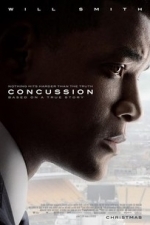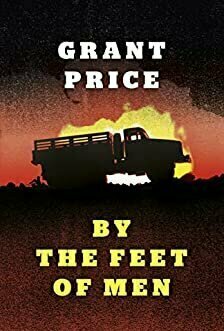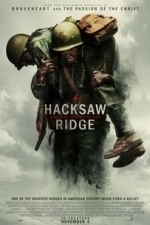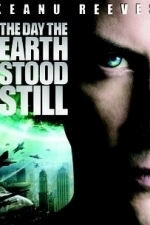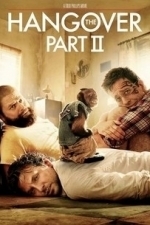Gareth von Kallenbach (980 KP) rated Concussion (2015) in Movies
Aug 6, 2019
had never heard of.
The main cast is as follows: Will Smith as Dr. Bennet Omalu, Gugu
Mbatha-Raw as Prema Mutiso, Alec Baldwin as Dr. Julian Bailes, Albert
Brooks as Dr. Cyril Wecht, David Morse
as Mike Webster, Matthew Willig as Justin Strezelczyk, Paul Reiser as
Dr. Elliot Pellman, Arliss Howard as Dr. Joseph Maroon, Luke Wilson as
Roger Goodell, Mike O’Malley as Daniel Sullivan, Hill Harper as Spellman
Jones, Eddie Marsan as Dr. Steven DeKosky, Stephen Moyer as Dr. Ron
Hamilton, and Adewale Akinnuoye-Agbaje as Dave Duerson.
Dr. Bennet Omalu works at the Pittsburgh coroner’s office as a forensic
pathologist along with Dr. Cyril Wecht and Daniel Sullivan. Omalu, a
highly educated Doctor hailing from Nigeria, strives to stride in the
footsteps of Dr. Wecht, and must contend with the derision thrown his
way by Sullivan.
Based on true events, the story follows Omalu in his quest to find out
the true cause of death of “Iron Mike” Webster, and subsequently team
mates and other football players that seem to go crazy for no obvious
reason.
Will Smith takes this role and immerses himself in it. His accent is
believable, his mannerisms are believable, his portrayal of the
character as a whole drew me and made me BELIEVE it.
The supporting cast are all really really great as well. Gugu Mbatha-Raw
as Smiths love interest, Prema is probably one of the quietest
characters in the movie, yet she portrays herself as Omalu’s staunch
supporter straight through the whole film.
Albert Brooks as Dr. Cyril Wecht gave a brilliant performance as a cut
and dry no-nonsense Chief Medical Examiner as well. He supports Omalu’s
research even when he must see that it may be detrimental to his own
career, and indeed, in the end, his support of Omalu does almost cost
him his entire career.
Dr. Omalus research, spending his own money to run testing in order to
find the cause of death of Mike Webster, puts him directly in the
crosshairs of the NFL. His subsequent discovery of and diagnoses of CTE
(Chronic Traumatic Encephalopathy) in Webster, and other NFL players
that died by their own hands or in tragic accidents due to basically
going crazy, threatened the NFL and its entire existence, or so they
thought.
Alec Baldwin gives a great performance as a man struggling between his
love of a sport and his guilt over sending players back into a game when
they were hurt. Early in the film he is shown to say “what am I
missing”. He has run the tests he knows to run, but cannot get to the
bottom of what is clearly affecting his players. He helps Dr. Omalu in
his quest to bring the truth before the NFL and the media and the
public.
Adewale Akinnuoye-Agbaje as Dave Duerson has only brief moments on film,
but his contribution to the movie and his final contribution to Omalus
research at the time of his death, helps bring CTE to the forefront of
the media eye, which in turn forces the NFL to address the findings, at
least ion some level.
Will Smith is up for a Golden Globe for his role in this film and I have
to say that in my opinion it is well deserved.
I loved the movie, it had my full attention from beginning to end, and I
thought that it was very well done. It showed the seedy underside of the
NFL and the extents to which big multi-million dollar companies will go
to in order to hide any truths that might threaten their way of doing
business. During the movie I murmured under my breath to my husband
“This reminds me of the crap the tobacco industry pulled when it was
trying to deny that cigarette smoking causes lung cancer”, and I was not
surprised when in some of the later clips there were voice overs heard
from a congressional hearing basically saying the same thing.
I would give this movie 5 out of 5 stars.
Ivana A. | Diary of Difference (1171 KP) rated By the Feet of Men in Books
Oct 5, 2020
<a href="https://diaryofdifference.com/">Blog</a>; | <a href="https://www.facebook.com/diaryofdifference/">Facebook</a>; | <a href="https://twitter.com/DiaryDifference">Twitter</a>; | <a href="https://www.instagram.com/diaryofdifference/">Instagram</a>; | <a href="https://www.pinterest.co.uk/diaryofdifference/pins/">Pinterest</a>;
<img src="https://i0.wp.com/diaryofdifference.com/wp-content/uploads/2020/09/Book-Review-Banner-80.png?resize=768%2C432&ssl=1"/>;
By the Feet of Men by Grant Price is a very good post-apocalyptic novel, full of adventures and danger. I am glad I got the chance to read and review this book. Thank you to the author, Grant Price, for sending me a copy of his book in exchange for my honest review.
<b><i>Synopsis:</i></b>
The book is set in a post-apocalyptic world, where the world’s population has been decimated by the Change, a chain reaction of events triggered by global warming. Governments have fallen and cities have crumbled. The productions have stopped. The Alps region, which contains the continent’s fresh water, has become a closed state with heavily fortified borders.
The ones that managed to survive cling on by trading through the Runners, truck drivers who deliver cargo and take a percentage. Two Runners, Cassady and Ghazi are called to deliver medical supplies to a research base deep in the Italian desert, where scientists claim to be building a machine that could reverse the effects of the Change.
On this journey they will be joined by a collection of other Runners, all of whom have something to prove and have a story of their own. Standing in their way are starving nomads, crumbling cities, hostile weather and a rogue state set to destroy the convoy. And there’s another problem: Cassady is close to losing his nerve.
<b><i>My Thoughts: </i></b>
The world building in By the Feet of Men is very interesting and very well described, especially the part about the Change and the Koalition. From the beginning, we get a very good idea of what kind of world we are living in now, from global warming, to the starving nomads, to how the Runners make a living. I think that was a very good introduction to the new normal that we are about to engage in.
I think perhaps due to the elaborate description, I found the beginning quite slow. The true adventure and road trip doesn’t start until halfway through the book. Once the adventure begins, though, many things happen in short spaces of time. The pacing is quite fast until the very end. The book contains brutal and graphic details, so it may contain a lot of trigger warnings and I wouldn’t recommend it for the faint hearted people.
I loved Cassady and Ghazi and really enjoyed their backstories.
The way how they made decisions based on their past experiences, which were sometimes very different. I love the constant battle they seem to have between what is right and wrong, when a decision has to be made quite fast to ensure their survival. Sometimes, their survival might mean leaving someone behind, and not both of them would agree that this is the right decision to be made. However, I think there is something much more difficult than making such a decision, and that’s living with the consequences.
Apart from the main characters, I had a very hard time remembering the other characters and their backstories. This made me annoyed a few times. I am very good at remembering side characters, and I usually prefer them to the main characters. However. this wasn’t the case for this book. And this is something that really bothers me.
I was quite intrigued about the ending.
I enjoyed it and I liked how it ended. My initial thoughts were that it was very realistic. It also had an ending that I haven’t seen too much explored in any post-apocalyptic fiction I’ve read or seen. I was a bit disappointed by the lack of explanation to some points. However, I think the main characters’ stories and experiences in the end of the book contributed to a balanced and emotional ending.
I definitely recommend By the Feet of Men to all fans of post-apocalyptic fiction. Something new and fresh, unexplored anywhere else and full of adventure and realistic brutality. I am sure you will enjoy it.

Home yoga practice
Health & Fitness and Lifestyle
App
What is preventing you from living your life to the fullest TODAY? Body aches? Stress? Your mood? ...

Centrifugo - Healthy Juices Recipes Diet Plans
Health & Fitness and Food & Drink
App
How can fruit and vegetable juices improve our physical condition, our health and our productivity? ...

7 Cups - Online Therapy for Anxiety and Depression
Health & Fitness and Medical
App
Feeling worried, sad, stressed or lonely? Need to talk to someone? Download 7 Cups now for FREE...
Bob Mann (459 KP) rated Hacksaw Ridge (2016) in Movies
Sep 29, 2021
When a war film is described as being “visceral” then you know you need to steel yourself mentally for what you might see. But given that this film is based around the horrendously brutal combat between the Americans and the Japanese on the Pacific island of Okinawa in 1945 this is a warning well-founded. For the battle scenes in this film are reminiscent of the opening scenes of “Saving Private Ryan” in their brutality: long gone are the war films of John Wayne where there would be a shot, a grasp of the stomach and a casual descent to earth.
But before we get to the battle itself, the film has a leisurely hour of character building which is time well spent (although it could have perhaps been trimmed a tad tighter). Desmond Doss (Andrew Garfield, “The Amazing Spiderman”, “Never Let Me Go”) grows up a God-fearing youngster in the beautiful surroundings of the Blue Ridge Mountains of Virginia. His alcoholic father (Hugo Weaving, “The Lord of the Rings”, “The Matrix”) has been mentally traumatised by the First World War, further strengthening Desmond’s fervent belief in following the Ten Commandments; most notably “Thou Shalt Not Kill”. But his patriotic sense of duty is also strong, and Doss signs up after Pearl Harbor and is posted to a rifle brigade that – given his refusal to even touch a rifle – puts him on a collision course with the US Army. It also (obviously) disrupts his romance with nurse sweetheart Dorothy (Teresa Palmer).
This is really two films in one, with the first half setting up extremely well the characters that make the second half so effective. For you care – really care – for what happens to most of the characters involved, especially the zealous and determined Doss who has nothing to face the Japanese hoards with but a medical bag. The feelings that comes to top of mind are awe that these real people actually had to go through this horror and hope that in today’s increasingly unstable political world we will never need to again face such inhumanity of man against man again.
Andrew Garfield really carries this film, and his Best Actor Oscar nomination is well-deserved. He is perfectly cast as the (onward) Christian soldier. Also outstanding is Hugo Weaving in an emotional and persuasive role playing opposite Rachel Griffiths (“Saving Mr Banks”) his wife. But the real acting surprise here for me was Vince Vaughn (“The Wedding Crashers”) who plays the no-nonsense platoon Sergeant Howell: never one of my favourite actors, here he brings in a warm and nuanced performance that ends with a memorable action scene.
Also worthy of specific note is Dan Oliver (“Mad Max: Fury Road”) and his team of special effects technicians, the stunt teams (led by Kyle Gardiner and Mic Rodgers), production designer Barry Robinson and the hair and makeup team, all of who collaborate to make the final half of the film so gripping.
The film marks a comeback from the film society ‘naughty step’ of Mel Gibson after his much publicised fall from grace in the mid-noughties. A Best Director Oscar nomination would appear to cement that resurrection. For this is a phenomenal achievement in direction and one that should be applauded.
The film bears closest comparison with the interesting two-film combo from Clint Eastwood – “Flags of our Fathers” (from the American viewpoint) and “Letters from Iwo Jima” (from the Japanese viewpoint). While all three films share the same blood and guts quotient, with “Hacksaw Ridge” edging this award, the Eastwood films tend to have more emotional depth and a more thought-provoking treatment of the Japanese angle. In “Hacksaw Ridge”, while the war crimes of the Japanese are clear, the war crimes of the Americans are quietly cloaked behind a cryptic line (“They didn’t make it”).
That being said, there is no crime in a rollicking good story well told, and “Hacksaw Ridge” is certainly that. This was a film I did not have high hopes for. But I was surprised to be proved wrong. Recommended.
Gareth von Kallenbach (980 KP) rated The Day the Earth Stood Still (2008) in Movies
Aug 14, 2019
This tone has carried over to modern day as the notion of hostile invaders from beyond has become part of our cinematic and written culture.
The ironic thing about “The Day The Earth Stood Still” was that it was a cautionary tale that stood apart from the genre films of the day. Instead of an all out assault on humanity, a visitor named Klaatu (Michael Rennie) came to deliver a message that change was needed or else there would be dire consequences. Klaatu told the people of the earth that they must learn to live in peace and make war a thing of the past or they would run the risk of being destroyed by more powerful races that would see them as a threat to their peaceful ways.
Klaatu had a powerful robot named Gort who would destroy any hints of aggression and used him to get his message of the need for peace across.
Now in 2008, 20th Century Fox has recreated this classic tale with a star studded cast and a large production budget.
In the new version, Jennifer Connelly stars as Helen Benson, a scientist who is raising her stepson Jacob (Jaden Smith), who still mourns for his father who was recently killed while serving in the gulf. One night, Helen is taken into custody by agents who whisk her and other scientists to a secret conference where it is learned that an object in on a collision course with Manhattan and that due to a lack of warning, there is no time to evacuate the city.
Just when the gathered group prepares for the worst, the mysterious object lands in the middle of Central Park and after being surrounded by the military, produces a lone being from the interior of the spherical object. Just as Helen is about to make first contact with the being, he is shot by a nervous soldier, and before anyone knows what has happened, a giant mechanized being emerges from the sphere and incapacitates the assembled crowd with a sound wave. Just as the creature is about to take matters further he is called off by the wounded being.
The wounded being is taken to for medical care and the confounded scientists are amazed to find a human being underneath the organic suit that the being was wearing. The being grows very quickly and is soon a full grown adult.
Naturally these events are very concerning to the U.S. government and Defense Secretary Jackson (Kathy Bates). The Being identifies himself as Klaatu (Keanu Reeves), and asks to speak with the leaders of the world about a very important matter. Jackson is convinced that Klaatu is the first wave of an invasion and orders him to be interrogated in order to learn his true mission.
Klaatu is able to escape and soon finds himself on the run with Helen and in doing so, learns about humanity. As his mission is revealed, it soon becomes a race against time for Klaatu and Helen to save the world from the greatest threat it has ever known.
The setup to the new film was very good and I was fortunate enough to see the film at an Imax screen which really enhanced the visuals of the film. Sadly there was not enough action for it to hold my attention as the best visuals in the film were largely shown in the trailer.
Once the events of the plot were put into motion, I found them to be very underwhelming, and the message of the film was lost in a series of muddled dialogue and a script lacking any really tension or drama. Klaatu is supposed to be a fish out of water that learns through Helen and Jacob about the other side of humanity, the one that is not about war, death, and destruction. Yet, thanks to the lack of chemistry between Reeves and the always good Connelly the audience is left with little to root for.
When the action finally comes it is very brief and restrained and not nearly enough to save the film, which stumbles to a very awkward and predictable finale.
I had hoped that this new version would be able to up the action promised in the first film and greater delve into the origins of Klaatu as well as the message of change he brought to humanity. Instead the film loses its way and the message becomes an afterthought leaving the audience with very little.

Deep Sleep and Relaxation Hypnosis- Cure Insomnia
Medical and Lifestyle
App
Does it work? 3.5 million people have used Mindifi's Deep Sleep and Relaxation hypnosis, a #1...
Gareth von Kallenbach (980 KP) rated The Hangover Part II (2011) in Movies
Aug 7, 2019
Plot of the film mild-mannered dentist Stu (Ed Helms), who is getting married in Thailand to the girl of his dreams. Undaunted by the fact that his fiancé’s father despises everything about him, Stu convinces his best friends Phil (Bradley Cooper), and Doug (Justin Bartha), to take the 16 hour flight to attend the ceremony. When news reaches them that a crestfallen Alan (Zach Galifianikis), is waiting for his invitation to the ceremony, Stu is reluctant because he does not want a repeat of what happened in Vegas.
But despite their misgivings, the friends decide to include Alan in the ceremony and embark to the airport for the long flight to Thailand. They’re joined at the airport by Stu’s future brother-in-law Teddy (Mason Lee), a child prodigy who was already attending Stanford at 16 and has designs on a future medical career. As Stu’s fiance explains later in the film, Teddy is their father’s “most prized possession.”
Alan takes an instant disliking to Teddy and sees him as an outsider in their “wolf pack” and doesn’t miss an opportunity to try to exclude Teddy. Upon their arrival in beautiful Thailand, the friends get through a somewhat awkward dinner with the future in-laws and relax on the beach for a bonfire and bachelor party. Phil makes sure to be extra careful to avoid any of the issues they had in Vegas and selects bottled beer that was given to them by the hotel staff and makes sure that every one of them only gets an unopened bottle to drink.
Despite these precautions, Stu, Phil, and Alan wake up the next morning in a seedy hotel with absolutely no memory of how they got there and what happened the night before. Stu now sports a fresh facial tattoo while Alan has a completely shaved head. Matters are further complicated when the group realizes that Teddy is missing and that what appears to be his severed finger is found to be floating in a bucket of water.
As if things were not bad enough, matters take an even extreme turn for the worse when a monkey and Mr. Chow (Ken Jeong), show up and add even bigger complications to the already complex situation. The group learns that Doug is safely back at the resort and waiting for their arrival at breakfast after having left the bonfire early, leaving Stu, Alan and Phil to piece together the forgotten events of the night and locate Teddy before the wedding. Along the way they run into criminals, the sleazy side of Bangkok, upset monks, and much more as they race against time to solve the mystery and locate Teddy.
What follows is a comedic adventure complete with jaw-dropping sequences that leaves the audience shocked at just how far they push the envelope. The cast works well with one another and there are some truly funny moments in the film. The biggest issue with the movie is that it must walk a fine line between using the established formula of friends trying to remember and deal with the consequences of their lost evening while not repeating itself.
This is a very tricky proposition as the film essentially follows the same plot line of the original film: a group of friends are trying to remember the previous night and locate a missing member prior to a wedding. There are also similar jokes such as Stu dealing with a tattoo instead of a missing tooth and Alan’s constant nonsensical bantering and plethora of useless information.
Instead of trying to reinvent the wheel director Todd Phillips instead focuses on the relationship of the cast and allows the unique and exotic setting to be the new character and foil for the comedy. Many times in the film it is established that Teddy must be located before “Bangkok gets him” and as such the city offers endless opportunities for the cast.
The film does drag at the three quarters mark but recovers nicely, leading to a predictable finale. While the film was not as thoroughly funny as the original, in terms of humor and storytelling, but there are still plenty of laughs and eye-popping scenes that make it an enjoyable comedy. There are rumors that Phillips has plans for third film in the series to complete the trilogy. If this is indeed the case I would welcome a third film with the understanding that more care be put into the plot to avoid rehashing previous jokes and situations.
